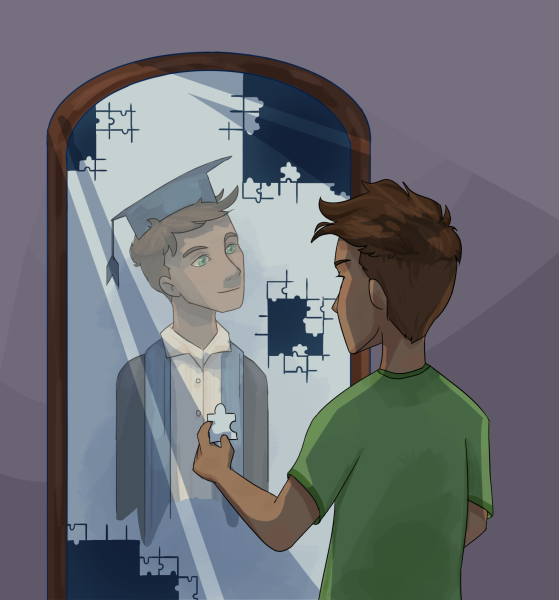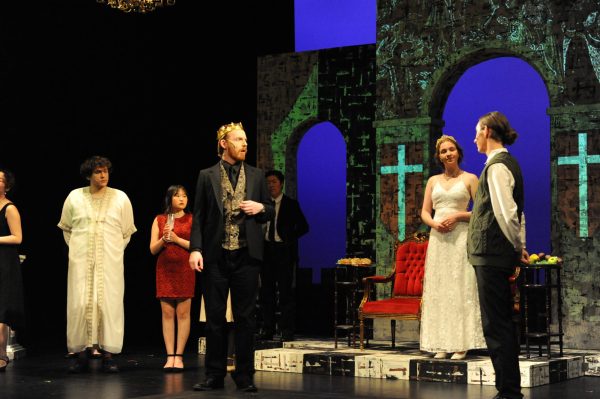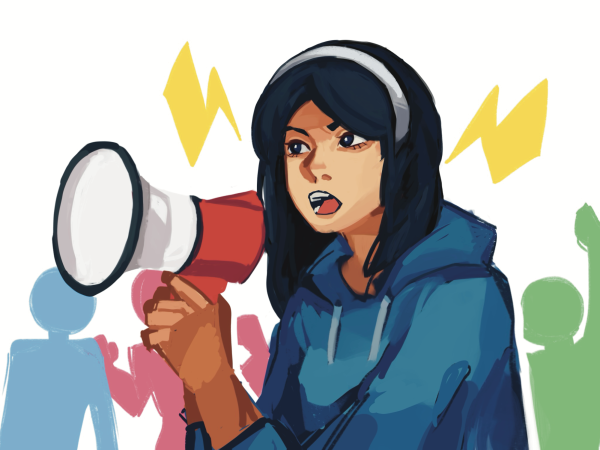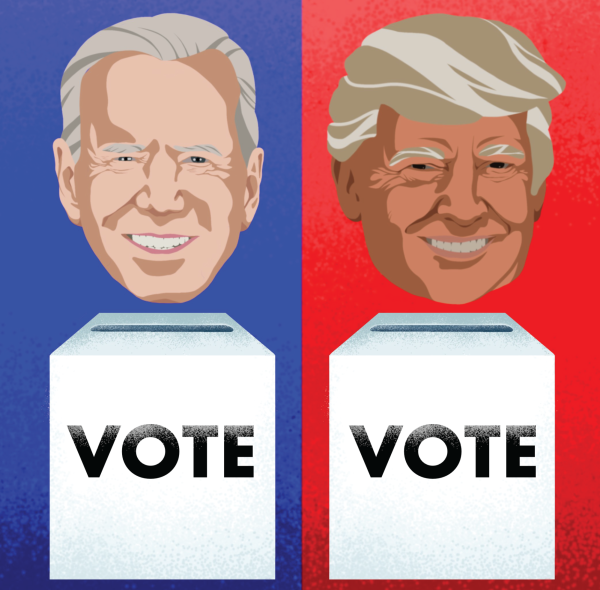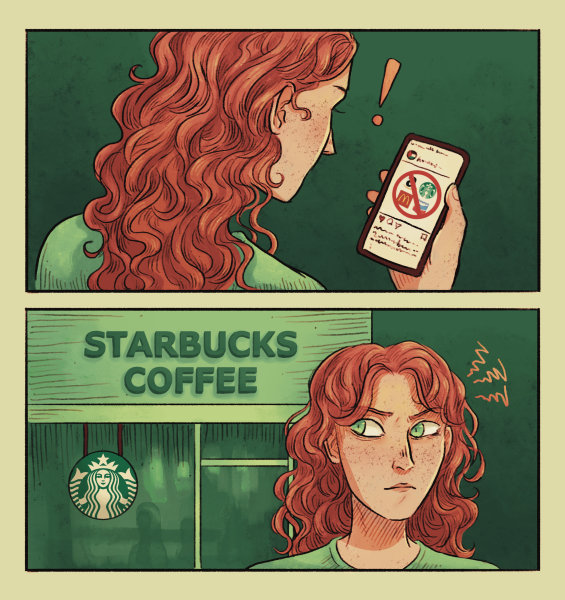Effects of society on everyday fashion
Junior Alisha Kumar shows her off personality by dressing in a more formal wear when she comes to school.
The alarm clock blares for the eighth time this morning at 7:59 a.m. You wake up, freak out for a moment about how much you slept in, quickly brush your teeth and hair, throw on a sweatshirt and sweatpants and run out the door, just barely making it to first period in time for class.
At the start of the first ring of an alarm at 6:30 a.m., you wake up, take a shower, make sure to use hair protecting serum before straightening your hair, pick a neat and “classy” outfit and walk out the door at 7:45 a.m. with a comfortable cushion of time to make it to school.
The first situation may sound all too familiar to many students, but for some, the second setting is closer to their daily routine.
High school is often considered a place where dressing as comfortably as possible to get through a stressful day would seem to make sense. However, some choose to do otherwise. So for the people who put in extra time and effort to dress up, why do they do it? Is there a motivation aside from a simple interest in fashion?
According to a few students who consistently put in effort to dress nicely for school, there are a variety reasons.
“It gives me a sense of feeling ‘put together,’” junior Alisha Kumar said. “Dressing well can be your way of presenting yourself because it can portray your personality. If you are put together on the outside, then people will assume you have your [stuff] together on the inside.”
Though there could be infinitely many things a person would want to keep private, some private issues could be caused by the overwhelming stress of school. As stress to obtain and maintain high academic performance continuously accumulates, a student may start to feel overwhelmed and as if he or she lacks control over his or her life. When feeling frazzled, dressing nicely can help a person feel more organized and prepared for the school day ahead.
However, dressing up does not always stem from the desire to create a façade for other people; it can also benefit him or herself. For Kumar, putting in the effort to give herself direction and working towards a goal is very important, even if not everything at the moment is perfect, and she uses fashion as her personal expression.
“If you’re making an evident effort, even if it’s just in the way you dress, that effort can lead to [achieving] your goal in the future,” Kumar said. “It’s like the saying: ‘dress for the job you want, not the job you have.’”
In addition to reflecting, perseverance and goal-setting, other goals that contribute to how a person dresses include boosting confidence and doing something enjoyable.
“I do believe that if you wear what feels good to you, you’ll be happier and more in tune with yourself,” Kumar said. “My style is a little more conservative than the average teenager, and it just so happens that I like the way that that looks on me and the way that it makes me feel. … [Fashion] is almost another form of art in that it can be an enjoyable way of expressing yourself.”
“Dressing for comfort” can have a variety of meanings and manifestations, depending on the different definition of “comfort” from person to person.
“Feeling like I’m stepping with my best foot forward makes me feel more comfortable than if I were to physically be ‘comfortable,’” Kumar said. “As long as I’m comfortable with what I’m wearing and how I dress, then that’s all that matters.”
A person’s reason for dressing up can also change over time.
Junior Laura Maystead used to put a lot of focus into what outfits she would wear because she felt it solidified her self-value.
“When I was younger I was ugly, skinny to the bone, scrawny and had a little gut on me, so I tried compensating for it in fashion,” Maystead said. “I was so self-conscious that I was an easy target for people. But when I wore a nice dress it made me feel special, like I was worth something, even if it was the clothes on my back.”
However, time and experience can change one’s perspective about the importance of outer appearance, just as Maystead’s approach to dressing up has changed.
“I went through hell and back with personal issues and family issues that I had to find myself to survive,” Maystead said. “I tried to find myself in these piles of clothes for so long, but I think now I’ve found it: confidence.”
As shown by Maystead’s own journey, once a person can realize the core issue of an insecurity and change the extreme amount of thought put into his or her outer appearance, the person’s strengthened character and newfound self-assurance can shine through his or her outside appearance.
“People can tell I’m confident and that I love myself and my body,” Maystead said. “The only intention behind my outfit is to show how great I feel on the inside on the outside, and because I just like fashion.”
In comparison to using an outfit to shield one’s internal self or to portray a specific, desired character, a person can let his or her fashion speak for itself.
“I don’t think [my outfits] represent my personality exactly,” Maystead said. “I think my fashion can be unapproachable sometimes, and I try my hardest to be kind and open towards others, but my fashion sense shows that … I’m firm in my beliefs and am passionate about things I love.”
Since the ways people dress also influence how others perceive them, sometimes, the purpose of dressing up is to create a positive first impression.
“First impressions are important,” Kumar said. “You can present yourself either through your words or your actions, but the first impression that you make is regardless of your behavior; it’s exactly how you look.”
Though people may want to stick to the ideal of “Don’t judge a book by its cover,” intuitively people do create initial expectations of people for their own safety and self-assurance. A first impression can change, but it exists nonetheless.
“We can work on that, but I don’t think that’s something that can just disappear,” Kumar said. “You can either hope that others will just get past judging you by your appearance or you can decide to accept the fact that people do judge [others] by the way that they look.”
Maystead agreed with Kumar.
“In our culture now, a person’s social status is frequently determined by his or her clothing,” Maystead said. “I believe that clothing shouldn’t be a direct representation of our status but in our society, sadly, it somewhat is.”
In addition to simple outer first impressions, a person’s choice to dress up can also be his or her own reflection of how she wants to show care and respect.
“To me, dressing well means that I have taken the time and the effort to make this impression on people and present myself in this way, and I really respect people who do make the time and the effort to do the same,” Kumar said. “It’s showing that I respect … the individual that I am, but it also shows that I respect the people that I’m surrounding myself with and that I only want to give my best to them.”
However, this is not to say that dressing down is necessarily disrespectful or defines a person as uncivilized.
“There are many different types of people, and many people will choose not to dress up,” Kumar said. “People can be more than meets the eye, so just because fashion is not something that you care about as much doesn’t mean you’re less of a person. It’s just a personal preference and belief for me.”
Maystead echoed Kumar’s acknowledgement of different types of self-expression.
“I think that everyone is entitled to represent themselves in one way or another, [whether] that is fashion or talking with a Madonna British accent,” Maystead said. “I appreciate all forms of self expression. I love to see when others put themselves out there and wear a historical outfits … or love wearing their cat sweater. Any form of articulation of self is admirable.”
Your donation will support the student journalists of Palo Alto High School's newspaper


